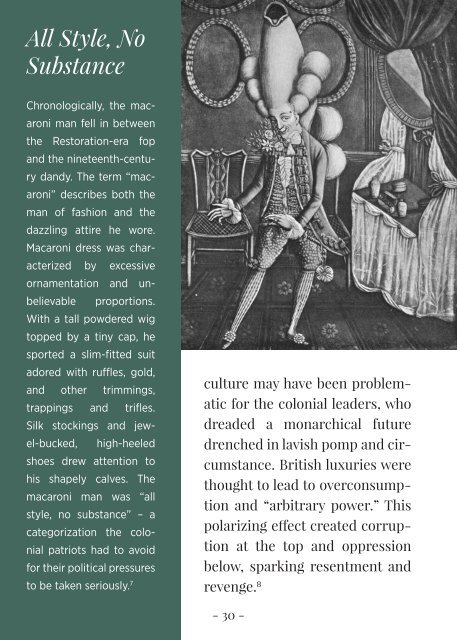The Fleece of Their Flock: Homespun & the American Identity
This interdisciplinary thesis project was researched, written, and designed by Jessica Vodnik and submitted in fulfillment of the Honors Senior Capstone requirement for the DePaul University Honors Program. Please do not copy, reproduce, or distribute without permission. Dr. Amy Tyson, Director, American Studies Dr. John Burton, Second Reader, History Undergraduate Honors Senior Thesis DePaul University, Chicago, IL May 10, 2015
This interdisciplinary thesis project was researched, written, and designed by Jessica Vodnik and submitted in fulfillment of the Honors Senior Capstone requirement for the DePaul University Honors Program. Please do not copy, reproduce, or distribute without permission.
Dr. Amy Tyson, Director, American Studies
Dr. John Burton, Second Reader, History
Undergraduate Honors Senior Thesis
DePaul University, Chicago, IL
May 10, 2015
Create successful ePaper yourself
Turn your PDF publications into a flip-book with our unique Google optimized e-Paper software.
All Style, No<br />
Substance<br />
Chronologically, <strong>the</strong> macaroni<br />
man fell in between<br />
<strong>the</strong> Restoration-era fop<br />
and <strong>the</strong> nineteenth-century<br />
dandy. <strong>The</strong> term “macaroni”<br />
describes both <strong>the</strong><br />
man <strong>of</strong> fashion and <strong>the</strong><br />
dazzling attire he wore.<br />
Macaroni dress was characterized<br />
by excessive<br />
ornamentation and unbelievable<br />
proportions.<br />
With a tall powdered wig<br />
topped by a tiny cap, he<br />
sported a slim-fitted suit<br />
adored with ruffles, gold,<br />
and o<strong>the</strong>r trimmings,<br />
trappings and trifles.<br />
Silk stockings and jewel-bucked,<br />
high-heeled<br />
shoes drew attention to<br />
his shapely calves. <strong>The</strong><br />
macaroni man was “all<br />
style, no substance” – a<br />
categorization <strong>the</strong> colonial<br />
patriots had to avoid<br />
for <strong>the</strong>ir political pressures<br />
to be taken seriously. 7<br />
culture may have been problematic<br />
for <strong>the</strong> colonial leaders, who<br />
dreaded a monarchical future<br />
drenched in lavish pomp and circumstance.<br />
British luxuries were<br />
thought to lead to overconsumption<br />
and “arbitrary power.” This<br />
polarizing effect created corruption<br />
at <strong>the</strong> top and oppression<br />
below, sparking resentment and<br />
revenge. 8<br />
- 30 -


